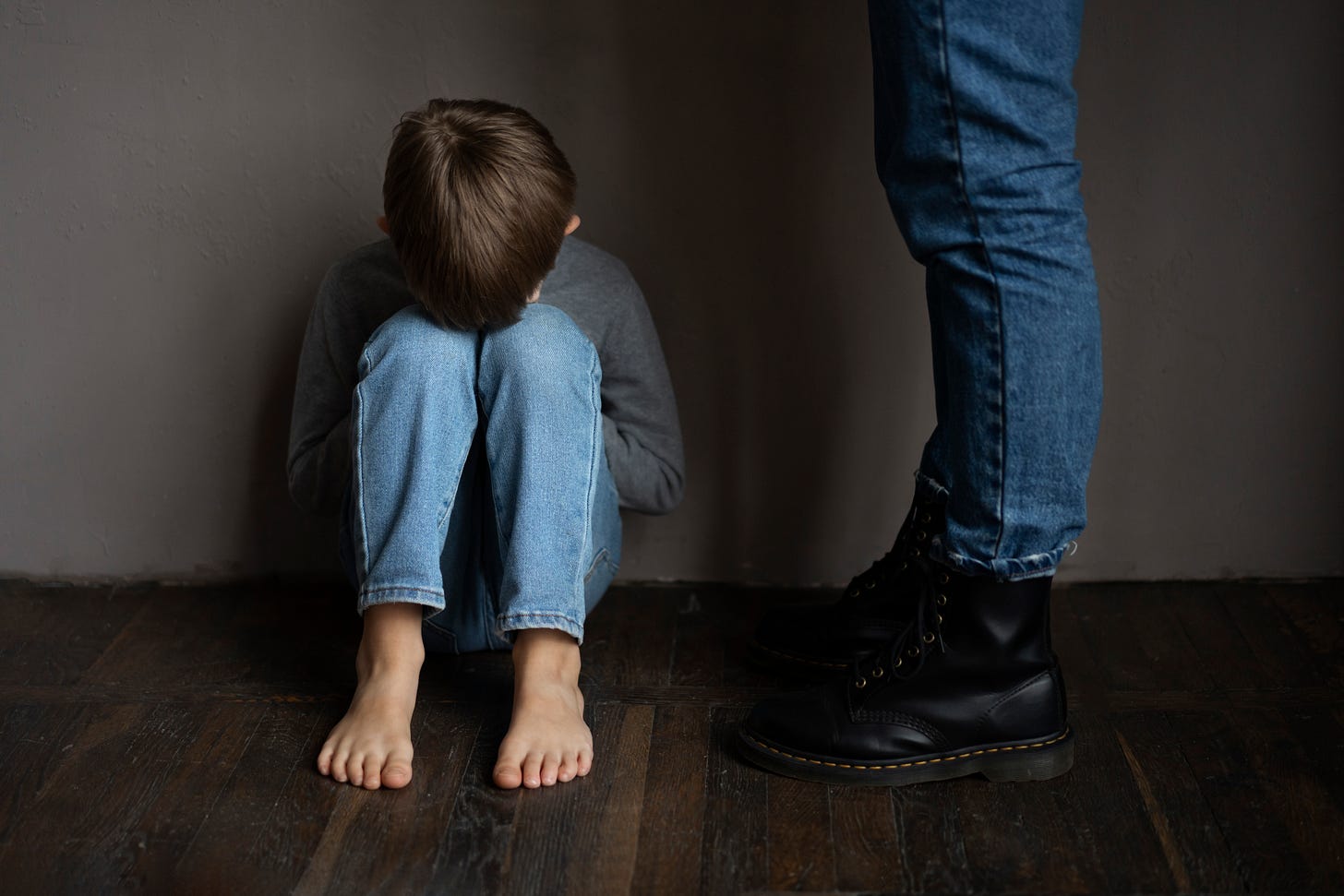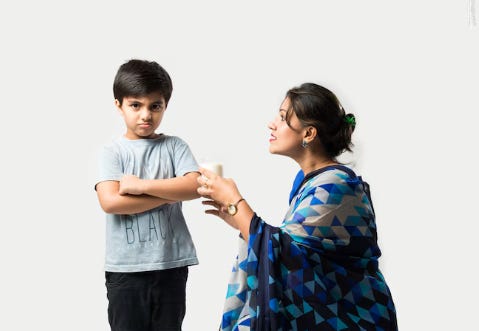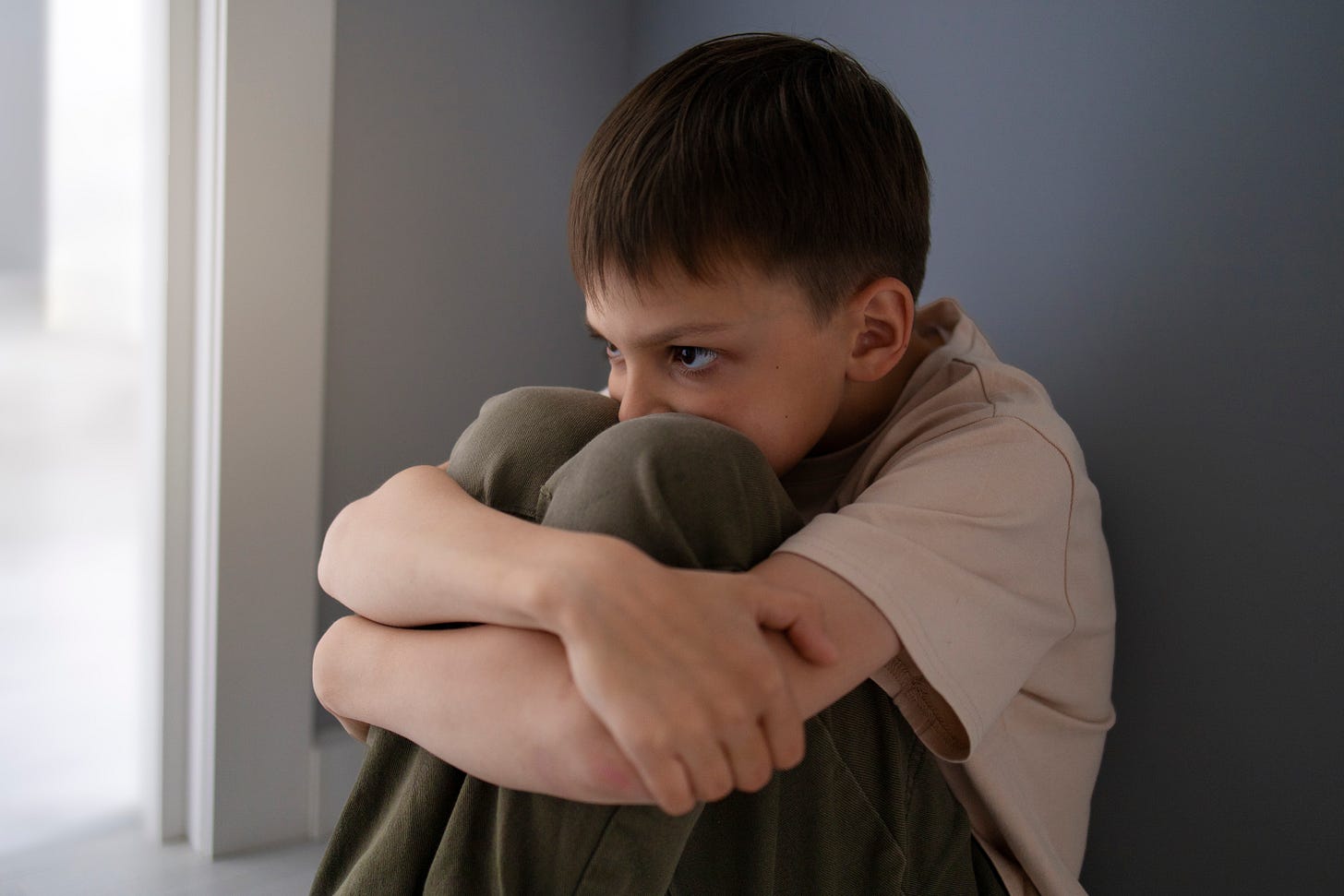As modern parents, we prepare our children for school, social challenges, and the world’s demands but there’s one conversation too many families still shy away from: body safety. The discomfort around this topic is real, especially in Indian households where sexual education is often avoided or stigmatized. But it's time we talk about it boldly and clearly because the cost of silence is simply too high.
In a chilling statistic shared on the Modern Indian Parent podcast, child sexual abuse cases in India increased by 96% from 2016 to 2022, with over 400 children abused every single day in 2022 alone. These numbers are not just numbers, they’re children. Possibly ours.
It’s our job to equip our children with the knowledge and confidence to protect themselves. This blog, inspired by a powerful episode of the podcast hosted by pediatric experts Rinie Gupta and Sanchita Daswani, walks you through the steps every parent can take to foster safety, awareness, and trust with their children.
51. Body Safety 101: Protecting Your Little Ones
Join Sanchita Daswani, a pediatric nutritionist, and Rinie Gupta, a pediatric sleep consultant, as they discuss the vital importance of teaching children about body safety. This episode is designed for mothers with children under five, offering practical advice on how to start these conversations early. With alarming statistics highlighting the rise in …
Why We Need to Teach Our Kids About Body Safety
The conversation starts with a fundamental truth: most abuse doesn’t come from strangers. In fact, 9 out of 10 abusers are someone the child already knows—a teacher, a relative, a family friend. Stranger danger is not enough.
We must empower children from an early age to understand and communicate about their bodies. Talking about body safety is not about destroying innocence; it’s about preserving it. Ignorance and silence are what endanger children, not knowledge.
Stages of Teaching Body Safety at Every Age
The idea of teaching a toddler about body safety may seem overwhelming, but it can and should be broken into age-appropriate stages:
Under 1 year: Begin with emotional vocabulary. Teach them to name and express feelings like "happy," "sad," "angry," and "scared."
Age 2: Introduce anatomical terminology for all body parts, including private parts.
Age 3+: Start distinguishing between private and public body parts, using references like a swimsuit to clarify which parts are private.
These gradual steps build a strong foundation without overwhelming either the child or the parent.
Using Correct Terminology of Body Parts
Avoid euphemisms like “cookie” or “peepee.” It may feel uncomfortable, but it's essential. If a child says, “Someone touched my cookie,” adults may dismiss it as innocent. However, saying “penis” or “vagina” leaves no room for confusion.
Correct language not only empowers children to speak clearly, but also strengthens legal action if ever needed. As unsettling as it may be, the stakes are too high to let discomfort guide us.
Recommended Books and Role Play
Books are a gentle yet powerful way to introduce these topics. Two favorites mentioned on the podcast are:
"Adi and Anku Learn to Stay Safe" by Menstrupedia: Real-life scenarios portrayed in a child-friendly way.
"Private Parts are Private" by Jayneen Sanders: Clear, illustrated guidance on body autonomy.
Role play is another effective strategy. One of the hosts recounted how her 3 year old daughter initiated pretend scenarios where she acted out what she would do if someone showed her inappropriate images. It was shocking at first but empowering.
Children learn by doing, and pretending can help them understand how to respond in real-life situations.
Good Touch vs Bad Touch
Teaching the difference between “good” and “bad” touch isn’t just physical, it’s emotional too. A bad touch may not always hurt, but it often causes:
Goosebumps
A sick feeling in the stomach
Rapid heartbeat
Confusion or fear
And importantly, not all private part touching is abuse. Doctors or parents might do so for health reasons. Teaching kids to listen to their gut and ask “Does this feel wrong?” helps navigate these gray areas.
How to Teach Kids to Handle Bad Touch
Equip kids with the NO-GO-TELL strategy:
NO – Say it loudly and clearly.
GO – Get away from the person immediately.
TELL – Inform a safe adult, even if it feels difficult.
Repetition is key. Reinforce this strategy through books, role-playing, and open conversations. Make sure your child knows that no situation is too small or too big to talk about.
How to Help Kids Identify Safe Network
Children need to know who they can talk to. Use the Five-Finger Rule to identify five safe adults, one for each finger. For example:
Parent
Grandparent
Teacher
Nanny
Family friend
Have your child draw their hand, write down the names, and decorate it together. Then crucially inform those five adults that your child sees them as safe people. Ask them to always take your child seriously if they report something.
The Steps Parents Need to Take
Teaching is just one part. As parents, we must also:
Inform caregivers (nannies, teachers, grandparents) of our child’s learning.
Emphasize that if a child confides in them, they must believe the child.
Avoid reactions like “Are you sure?” or “Don’t be silly.” These can shut communication down forever.
Confront the accused, even if it’s uncomfortable. Your child must see that you will protect them.
In a society where family dynamics often take precedence, this can be a tough pill to swallow. But our duty is to our child, not to maintaining the comfort of an abuser.
Setting Boundaries with Family Members
One particularly sensitive topic in Indian homes is affection. “Go hug your uncle,” “Give aunty a kiss”—these phrases are common, and well-intentioned.
But they erode a child’s understanding of consent.
Sanchita recommends offering alternatives like a high-five or a wave. Teach children that they decide who touches them, even if it's family.
As Rinie wisely said, “I will not exploit my child’s body boundaries just to make someone feel respected.” It’s not disrespectful to protect your child’s autonomy, it’s NECESSARY.
Handling Secrets vs Surprises
“Don’t tell mom I gave you ice cream.” Seems harmless, right?
But this lays the groundwork for something more dangerous.
Abusers rely on secrecy. That’s why in your home, secrets must not be allowed.
Instead, teach the difference:
Secrets are meant to stay hidden (bad).
Surprises are meant to be revealed (good).
Even if it means reacting calmly when your child “confesses” a harmless secret, do it. Your reaction shapes their trust.
Signs of Abuse to Look For
Unfortunately, children may not always be able to tell us if something is wrong. Here are signs to watch for:
Physical signs (especially in young children):
Redness or swelling in private parts
Discomfort during bathing or toileting
Emotional and behavioral signs:
Sudden withdrawal or silence
Anxiety around a specific person
Changes in eating or sleeping habits
Ultimately, the best prevention and detection tool is communication. If your child trusts you and knows how to articulate their experiences, you're already far ahead in protecting them.
Final Thoughts: Awareness Is Protection
It’s heartbreaking that such conversations are necessary. But it’s even more heartbreaking when they’re absent and something goes wrong.
Every child deserves to grow up safe, informed, and confident in their ability to protect themselves. It starts with you, the parent, having that first conversation, reading that first book, doing that first role-play, and above all, believing your child.
Be brave. Be honest. And remember—this conversation could save a life.
If you found this blog helpful, please share it with friends and family who have young children. Let’s raise a generation that’s informed, empowered, and protected.
51. Body Safety 101: Protecting Your Little Ones
Join Sanchita Daswani, a pediatric nutritionist, and Rinie Gupta, a pediatric sleep consultant, as they discuss the vital importance of teaching children about body safety. This episode is designed for mothers with children under five, offering practical advice on how to start these conversations early. With alarming statistics highlighting the rise in …






